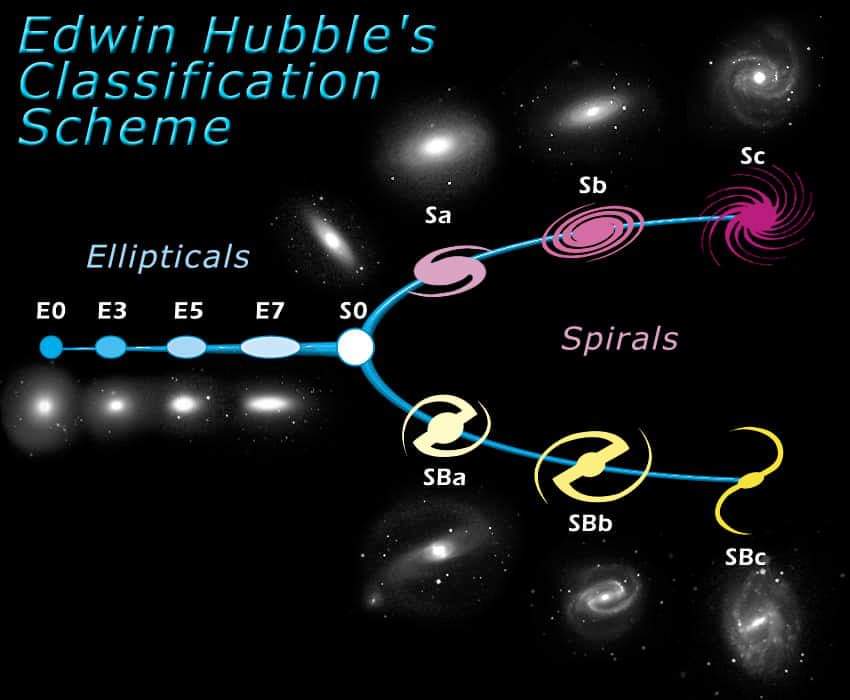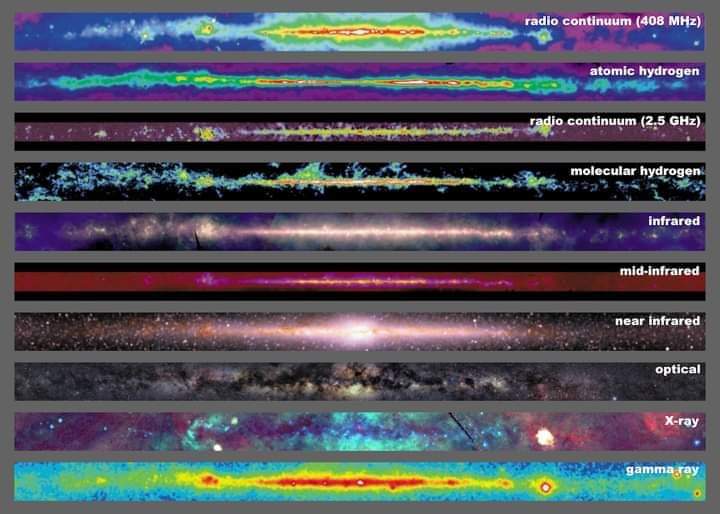
Galaxies can be classified into three main types: elliptical, spiral, and irregular. Hubble’s morphological classification is a more detailed taxonomic method. Since the Hubble method classifies galaxies only on the basis of shape, it ignores the rate of star formation in Starburst galaxies and the number of active galaxies.
Elliptical. (Elliptical galaxy)
The Hubble taxonomy classifies elliptical galaxies according to their ellipticity. These types range from the spherical E0 to the highly elliptical E7. These galaxies are ellipsoidal in shape and appear elliptical in any direction. They do not have much structural features and do not have much interstellar medium. Therefore, open galaxies and the formation of new stars are less common. Most of these stars are older and orbit the galaxy in different directions. These are very similar to spherical galaxies
The largest galaxies are the giant elliptical galaxies. These are thought to have formed as a result of galaxies colliding and merging. These can be very large compared to spiral galaxies. These giant elliptical galaxies are usually found near the center of large galaxy clusters. Starburst galaxies are also formed by the collision of galaxies that lead to the formation of the elliptical galaxy.

Spiral. (spiral galaxy)
Spiral galaxies are made up of rotating disks of stars and interstellar medium. There will also be a push of older stars in the center. The bright arms extend from this thrust. The letter S is used in the Hubble taxonomy to represent spiral galaxies. This is followed by the use of any of the letters a, b and c, depending on the size of the center thrust and the tightness of the arms. The arms of the Sa galaxy are tight and indistinct. The thrust at the center of these will be very large. In contrast, the arms of Sc Galaxies are open and slightly pushed in the center.
In spiral galaxies the arms are almost logarithmic spirals. It is theoretically possible to form such a shape by making small changes to a uniformly
orbiting constellation. The spiral arms rotate around the center like stars, but their angular velocity is constant. That is, the stars move from one arm to the other. The arms are areas of high density matter and density waves. As stars move through one arm, gravity from high-density regions changes the velocity of the stellar system (this velocity returns to normal when the stars emerge from the other side of the arm). The high density of arms causes star formation, and we can see the arms because they contain many bright and young stars.

In most spiral galaxies, stars in the form of long bars protrude to either side of the center and eventually become part of the arms. These are called Bard spiral galaxies. SB will be used to denote these in the Hubble taxonomy, followed by a, b or c as described above. These are thought to be transient structures formed by density waves emanating from the center or by tidal gravity with another galaxy. The centers of most bard spiral galaxies are active, possibly because the gases move toward the center through the arms.
The Milky Way galaxy is a large disk-shaped spiral galaxy about 30 kiloparsec in diameter and one kiloparsec thick. There are about 2 × 10 ^ 11 stars in our galaxy. The mass is about 6 × 10 ^ 11 times that of the Sun.

Other forms
Peculiar galaxies are galaxies that have unusual features due to tidal interactions with other galaxies. An example of this type is the Ring Galaxy, which has a bare center, orbiting stars, and interstellar medium. They are thought to have formed when another small galaxy passed through the center of the spiral galaxy. A similar ring-like structure can be seen in the infrared images of the Andromeda galaxy, suggesting that a similar phenomenon may have occurred in the Andromeda galaxy.






Recent Comments